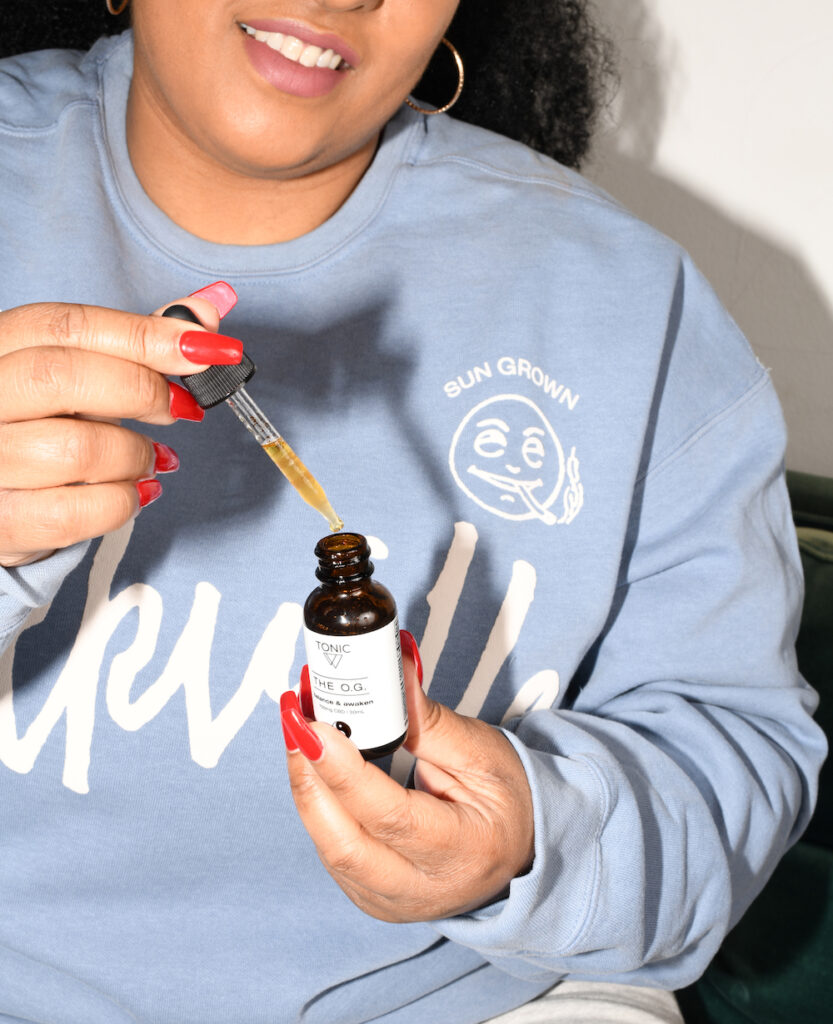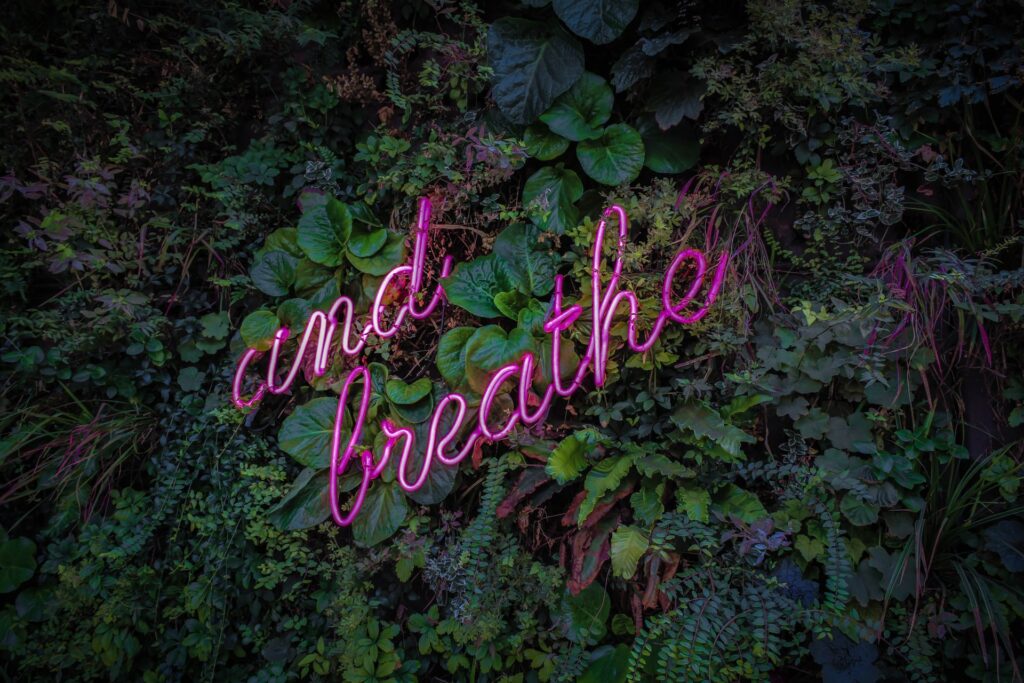Simple Tips to Stop Anxiety in its Tracks
CBD is an amazing tool to help keep anxiety at bay, but we are big proponents of filling your self-care tool box with as many “fixers” as possible. Who knows, maybe you feel anxiety coming on and you don’t have your trusty Chill TONIC CBD tincture with you, or maybe you need something to hold you over until the dose kicks in. While both of those scenarios are great examples of why having anxiety-relieving back ups is important, having a full suite of coping techniques will actually help you get more from your CBD.
There is no magic bullet when it comes to managing anxiety and depression. CBD can get you really far by affecting your actual body chemistry to create a calm, balanced environment, but the techniques we are going to discuss here will help you make the most of that balanced state. Here’s what we really want you to understand: these practices work best with CBD, and CBD works best with these practices.
When it comes to managing anxiety and depression, one of the most important things that TONIC, and CBD in general, can provide is spaciousness.
Anxiety is a product of worrying about future ‘what ifs’. Depression is usually rooted in regret and a poor self worth based on a perspective of the past. Peace, on the other hand, lives fully and completely in the present moment.
To become present, we must create space between ourselves and our thoughts; we must ground ourselves in ‘what is’, not ‘what might be’. We know – easier said than done, right? Right.
That’s where CBD comes into play. *Bonus: two of our most-loved Doses – Chill and O.G – also contain calming, balancing herbs like ashwagandha, lemon balm and passionflower. These botanicals support the actions of CBD in your body and create even more distance between you and what’s making you anxious.
How does CBD work to manage mood and anxiety levels?
CBD can actually directly affect your Serotonin levels. Serotonin is a chemical messenger that is often referred to as “the feel good neurotransmitter” because it is directly linked to mood, anxiety, appetite, sex drive and sleep. CBD allows more of it to be active in your system. In this sense, CBD functions similarly to SSRIs (Selective Serotonin Reuptake Inhibitors) like Zoloft, Prozac, or Lexapro, which are the most commonly prescribed medications to address anxiety and depression.
Supplementing with CBD results in increased levels of the endocannabinoid called Anandamide, often dubbed ‘the bliss molecule’. With a name like that, it’s pretty clear why you’d want more of it hanging around.
Cannabidiol also has the ability to affect GABA levels. GABA is like our bodies’ brake pedal. It slows nervous system activity; its presence is absolutely necessary for calming you down after stressful moments, for slowing racing thoughts, and for getting a good night’s sleep.
CBD alone can go a long way in helping you manage feelings of anxiety and depression due to its significant impact on your mind-body chemistry. That boost in Serotonin and GABA allows your mind to wind down from its tail spin of anxious thoughts. Now, you’re out of ‘fight or flight’ panic mode and in a place where you can actually step back and get some perspective. That’s the spaciousness we’re talking about.
Now, here comes the real challenge. You’ve conquered the body, but now you have to address the other side of the coin: your mind. You may still be faced with the daunting challenge of breaking the negative or obsessive thought patterns/programming/self-talk responsible for pulling you out of the present and into the dark abyss of anxiety and depression.
Work needs to be done to break those patterns and achieve the fullest potential of your healing. That’s why having calming, grounding practices to use alongside your CBD regimen is the key. It’s what you do with that spaciousness that determines how much relief you’ll experience and how long that relief will last.
Quick, simple practices that you can do right now to calm your anxiety and ground your energy
1. Get out of your head and into the present moment in 5-4-3-2-1
Tuning into, and focusing on, the physical sensations of your body helps to cultivate calm while grounding yourself in the present moment. The super simple 5-4-3-2-1 technique is a great way to connect with your physical body and surroundings. All you have to do is tune into your senses and name:
- 5 things you can see
- 4 things you can hear
- 3 things you can touch
- 2 things you can smell
- 1 thing you can taste
You’re no longer swept up in your thoughts, rather you are steadying yourself in the peacefulness of ‘what is’.
2. Body-sensing to ground your energy and heighten your mind-body connection
While the 5-4-3-2-1 technique is a tried and true staple, this mind-body practice is another quick and easy way to tune in to your physical presence. Body-sensing is a meditation technique that places focus on the physical sensations of your body. Tuning in to your body and the feeling of energy flowing through once again serves to ground you in the present. It increases your awareness, fosters greater mind-body connection and drives an either further wedge between you and your thoughts.
The easiest way to get started is by focusing on the palms of your hands.
Find a quiet, peaceful spot and simply close your eyes, begin to deepen your breath and try to actually feel the energy in your hands. You’ll start to notice the tingle of vibrational energy flowing through your hands. Focus on that feeling. Tune into it. Don’t judge it, don’t chase it. If it fades simply take a deep breath and re-focus.
You can build on this practice by extending the awareness to other parts of your body, following the flow of energy and fine-tuning your awareness.
3. Belly Breathing
“Just take a deep breath” is probably one of the most common tips doled out to us when we are experiencing anxiety. But, hey, clichés become clichés for a reason – it’s actually a really good tip!
What we want to share with you here is how and why deep, diaphragmatic breathing works so well. The more you understand what is happening in your body during these practices, the stronger your mind-body connection becomes and the more effective these practices can be.
Deep breathing is a sign of safety and calm. When you are stressed, anxious, or in a dangerous situation, your body’s survival instincts kick in. Your heart rate becomes elevated and your breathing becomes more rapid and shallow. Shallow breaths fail to full engage your diaphragm, which is very important to note. As you calm down, your heart rate and breath normalize. The seemingly-simple difference in your breath can actually signal big changes in your body and mind.
Try breathing super quickly now, like you’re out of breath, and you’ll notice it is your chest that is rising and falling. That means your diaphragm is not fully engaged during each breath.
Now, do the opposite. Take a slow, deep breath in through your nose and pull your breath down into your belly. Feel your belly rise as it fills like a balloon with your breath. Then, feel your belly contract as you release that breath out through your nose. That movement of your belly, when done correctly, is a sign that your diaphragm and its muscles are actually engaged and active with each breath.
Why diaphragmatic breathing matters
By taking that big inhale and pulling your breath down into your belly, you are pulling down your diaphragm. In turn, as the diaphragm is pulled down, it tugs on the vagus nerve which is a key part of our Autonomic Nervous System (fight or flight / rest and digest). It is the main communication pathway in the gut-brain axis and plays a key role in our stress response.
The vagus nerve takes that tug from the diaphragm as a signal that all is safe and that it is time to exit fight or flight and enter rest and digest. That switch from fight or flight to rest and digest means a release of calming GABA and feel-good Serotonin.
Remember this the next time somebody tells you to take a deep breath and your first instinct is to roll your eyes (been there).


 The Steady Supply
The Steady Supply

 Personalized Vibes
Personalized Vibes




